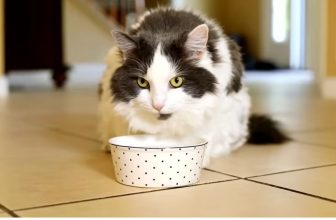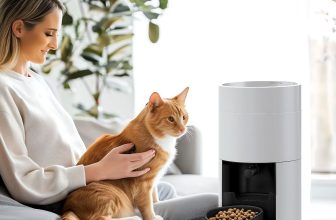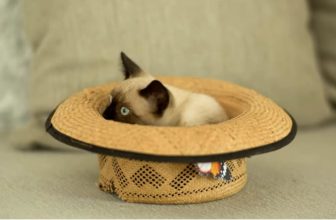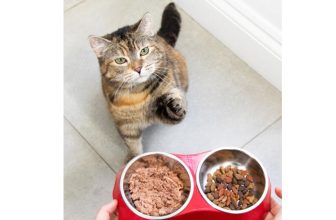Can Cats Have Broccoli? The Best Guide

As cat owners, we all want to give our furry friends the best care possible, and that includes their diet. It’s not uncommon to wonder if certain human foods like broccoli are safe for our cats to eat. Broccoli is a nutritious vegetable that’s packed with vitamins, antioxidants, and fiber, so it’s understandable why pet owners might want to share it with their cats. But is it safe? In this guide, we’ll dive into the question: can cats have broccoli? Plus, we’ll explore how to feed it safely, the benefits and risks, and offer healthy alternatives to consider.
Can Cats Have Broccoli?
Broccoli is a cruciferous vegetable family member, including cauliflower, kale, and Brussels sprouts. These veggies are popular among humans due to their numerous health benefits. But when it comes to your cat, can this veggie be included in their diet? The short answer is yes, cats can eat broccoli, but there are some important things to consider.
What Is Broccoli?
Broccoli is a green, leafy vegetable known for its high nutrient content. It’s packed with essential vitamins, including Vitamin C, K, and folate, as well as fiber and antioxidants. These nutrients contribute to various health benefits for humans, such as improved immune function and digestive health. While it’s a healthy option for people, the question is whether these same benefits apply to cats.
Broccoli is typically consumed by humans either raw or cooked, often as a side dish, in salads, or blended into soups. It’s also found in smoothies and stir-fries. But before you share your favorite broccoli dish with your cat, it’s important to understand how it might affect them.
Is Broccoli Safe for Cats?
While broccoli is not toxic to cats, it’s essential to give it to them in moderation. Cats are obligate carnivores, meaning their primary source of nutrition comes from meat, not vegetables. They don’t need broccoli for their survival, but it can serve as a healthy treat in small quantities.
However, there are potential risks to feeding your cat broccoli. For example, the tough stems and large pieces can pose a choking hazard. If not prepared properly, broccoli may also cause digestive upset, leading to discomfort, diarrhea, or gas. It’s best to feed it in small, manageable portions to avoid these issues.

Benefits of Broccoli for Cats
If you decide to give your cat a small serving of broccoli, there are several potential benefits. While not a necessary part of a cat’s diet, here are a few reasons why broccoli might be a good occasional treat:
- Rich in Vitamins: Broccoli is an excellent source of Vitamin C and Vitamin K, both of which contribute to a healthy immune system and support bone health.
- High in Fiber: The fiber in broccoli can help promote digestive health by supporting regular bowel movements. It can also provide a feeling of fullness without adding too many calories.
- Antioxidants: Broccoli contains antioxidants that can help fight off free radicals, potentially reducing inflammation and improving overall health.
- Low-Calorie Snack: For cats who need to lose weight, broccoli can be a low-calorie, healthy treat option compared to other snack foods or commercial cat treats.
How to Safely Feed Broccoli to Cats
If you choose to introduce broccoli into your cat’s diet, it’s important to do so safely. Here’s how to prepare and serve it properly:
- Cooked, Not Raw: Cooking broccoli—either by steaming or boiling it—makes it easier for cats to digest. Raw broccoli might be too harsh on their stomachs, especially if given in large quantities.
- Small Pieces: Cut the broccoli into small, bite-sized pieces to avoid any choking hazards. Cats should be able to easily chew and swallow the vegetable without difficulty.
- No Seasoning: Avoid seasoning the broccoli with salt, garlic, or other spices. These ingredients can be harmful to cats.
- Monitor for Reactions: As with any new food, introduce broccoli slowly and monitor your cat for any signs of digestive upset. If your cat shows signs of discomfort, it may be best to stop feeding it to them.
- Portion Control: Keep the portion small. A couple of small florets once in a while is sufficient as a treat.

Are There Any Risks of Feeding Broccoli to Cats?
While broccoli can be a healthy treat, there are some risks to be aware of:
- Digestive Issues: Cats have sensitive stomachs, and feeding them too much broccoli can cause digestive issues such as gas, bloating, and diarrhea. Too much fiber can also be difficult for cats to process.
- Choking Hazard: The stems of broccoli are tough and fibrous. If your cat tries to swallow a large piece, it could become a choking hazard. Always chop broccoli into small, manageable pieces.
- Overfeeding: Although broccoli is healthy, it shouldn’t make up a large portion of your cat’s diet. Cats need protein from meat to thrive, and feeding them too many vegetables can upset the balance of their diet.
- Allergies or Sensitivities: Not all cats will react well to broccoli, and some may have allergies or sensitivities. Always observe your cat after they consume any new food and consult your vet if any issues arise.
Healthy Alternatives to Broccoli for Cats
If you’re looking for other healthy, safe options to feed your cat, there are several vegetables that cats may tolerate better than broccoli:
- Carrots: Carrots are low in calories and high in Vitamin A. They can be boiled or steamed and chopped into small pieces to serve as a crunchy treat.
- Peas: Peas are packed with protein and fiber and are often included in many commercial cat foods. Serve them boiled or steamed for an easy treat.
- Pumpkin: Pumpkin is a great source of fiber and can help with digestive issues. It’s often used to help regulate bowel movements and soothe an upset stomach.
- Spinach: Spinach is rich in iron and antioxidants. While it’s generally safe for cats in small amounts, it should be avoided in cats with kidney disease due to its high oxalate content.
These vegetables can serve as nutritious treats that provide variety without overloading your cat with fiber or unnecessary calories.
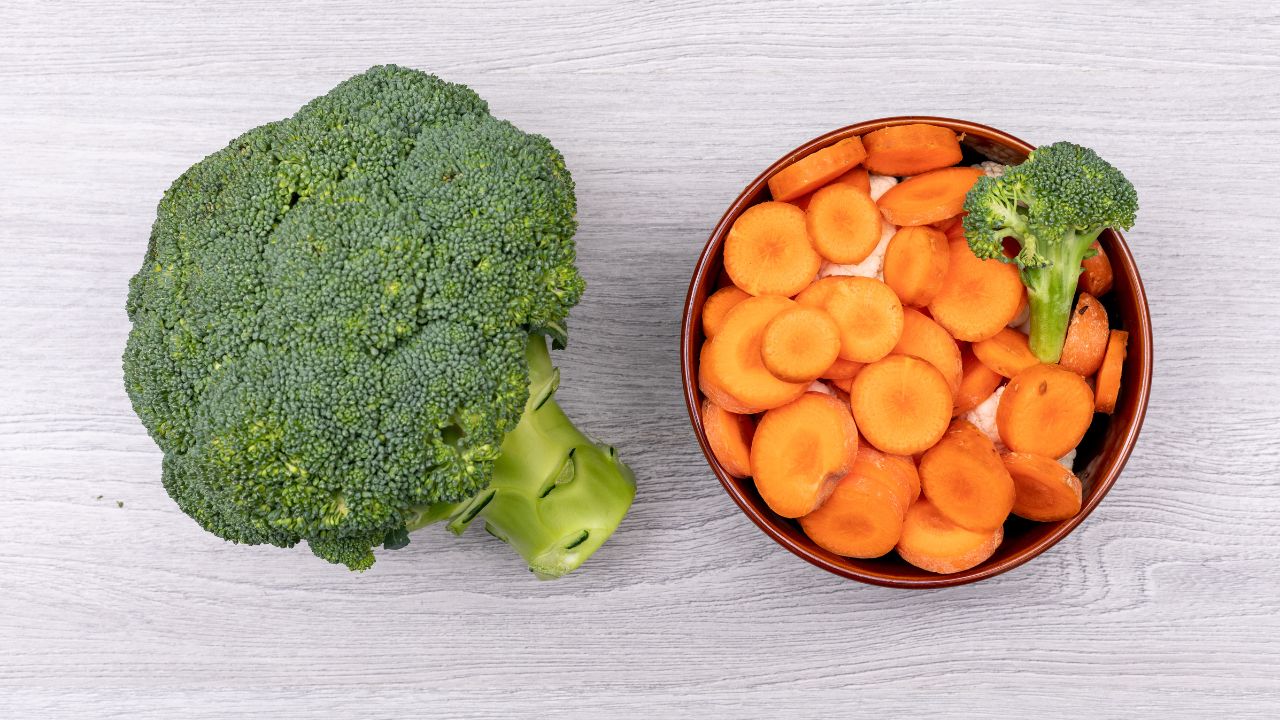
Frequently Asked Questions: Can Cats Have Broccoli
Ans-1: Yes, broccoli is generally safe for cats in small amounts. It provides some vitamins and fiber, but should be given in moderation.
Ans-2: While broccoli is safe for most cats, overconsumption may cause stomach upset, gas, or digestive issues. Always monitor your cat after introducing a new food.
Ans-3: Steam or boil broccoli without seasoning and cut it into small, manageable pieces to prevent choking hazards.
Ans-4: Broccoli can offer some health benefits like vitamins C and K, fiber, and antioxidants, but it should never replace a balanced cat diet.
Ans-5: Yes, some vegetables like onions, garlic, and leeks can be toxic to cats and should always be avoided. Qus-1: Is broccoli safe for cats to eat?
Qus-2: Can broccoli cause any harm to my cat?
Qus:-3 How should I prepare broccoli for my cat?
Qus-4: Can broccoli help with my cat’s health?
Qus-5: Are there any vegetables cats shouldn’t eat?
Conclusion
Broccoli can be a healthy treat for cats in moderation, offering benefits like vitamins, fiber, and antioxidants. However, it’s important to feed it in small amounts and prepare it properly to avoid potential risks such as digestive upset or choking. Every cat is different, so it’s important to observe how your pet reacts and consult your vet if you have concerns.
Call to Action
Have you tried feeding your cat broccoli? Share your experiences or ask any questions in the comments below! For more tips on feeding your cat and keeping them healthy, check out our other pet food guides and advice.
This blog post should cover all the key points from your outline while maintaining a friendly, informative tone. Let me know if you’d like to adjust any section or need further details on any topic!



